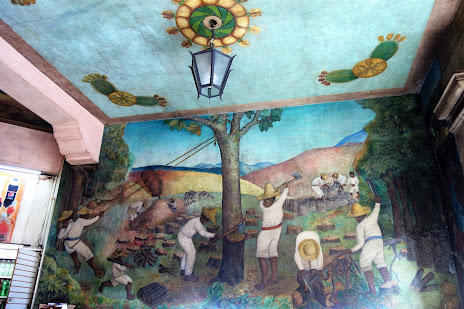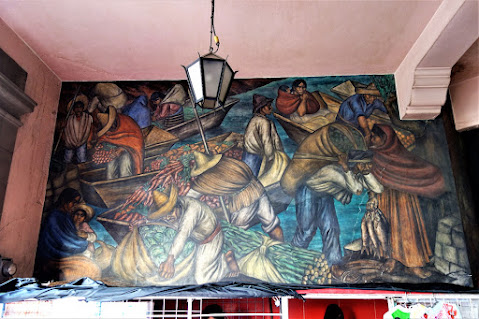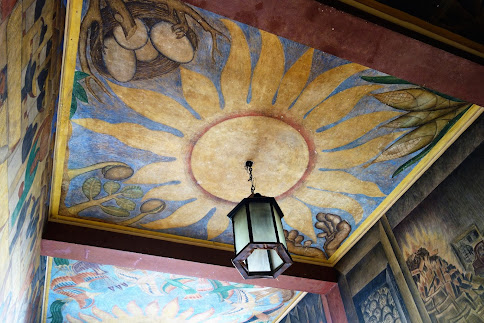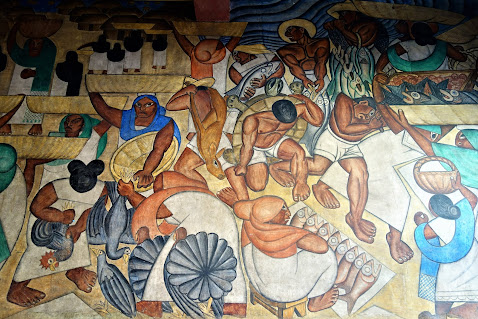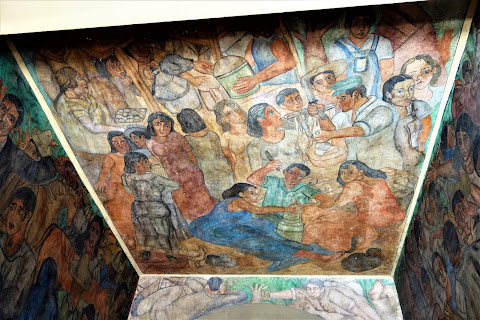When Alejandro and I were downtown last Saturday, there was someplace that he had never seen, a small, underground archaeological site. I had been there several years ago, and I wrote a blog entry about it. But I was happy to pay another visit so that Alejandro could see it.
Behind the Cathedral is a colonial era house which is now a cultural center operated by the government of Spain.
Some years ago, when the Spanish Cultural Center expanded, taking over a parking lot behind it, an archaeological discovery was made. Under the lot were the foundations of an Aztec building. (The center of Mexico City, of course, is built upon the site of the Aztec capital of Tenochtitlan. Whenever there is any excavation for construction work, pre-Hispanic remains are likely to be found.) The cultural center incorporated the discovery into its expansion and now has a small museum / archaeological site in its basement.
It is thought that the foundations part of the "calmécac", the school for the sons of Aztec nobles. A model shows what archaeologists think the school looked like.
Although the little that remains is not especially impressive, it is fascinating to think that all of central Mexico City rests upon Aztec foundations such as these.
On the photo of the model above, you can see that the roofline had decorations somewhat like battlements. These architectural elements, called "almenas" were in the stylized form of a seashell. The seashell was associated with Ehécatl, the god of wind and was a symbol of fertility. The archaeologists discovered five of these "almenas" carefully buried under the flagstones in front of the foundation. Two of them are on display here. The other three are in the nearby Museum of the Templo Mayor.
Perhaps when the Aztecs remodeled the "calmécac", they buried these "almenas" as an offering.
Numerous other artifacts were found during the excavation and are on display in this small museum. This statue of Ehécatl still has some of its original paint.
Many fragments of Aztec pottery were found.
Several other discoveries beneath the heart of Mexico City have been made in recent years. It would be really cool if eventually all of them would be open to the public.


























